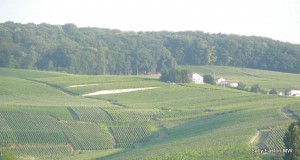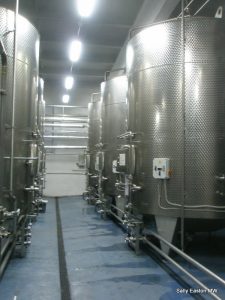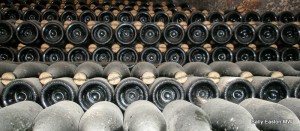The pendulum of Champagne and Prosecco
A version of this article first appeared in the Special Edition of Winestate magazine, December 2014.
#ThrowbackText? Given the continued rise in consumption of sparkling wines around the world, and persistent popularity of Prosecco, this might add a bit of short-term historical context.
There seems to be a bit of a flux in the world of sparkling wines. We’re all loving them, but the aftermath of the global financial crisis has dented the shine of Champagne as sales of this luxury wine dropped in 2013 to nearly 305 million bottles, down just over 1% on the previous year.
By contrast, the 2013 global sales of all sparkling prosecco and glera which hails from the Veneto and Friuli-Venezia-Guilia regions of north-east Italy, overtook than those of Champagne, having grown to 307 million bottles, according to figures from the Italian Sparkling Wine Observatory (OVSE).
Champagne has long been a protected term, used to define sparkling wines made by the traditional method and made in the Champagne region of France. The Champagne region is very protective of the term, presumably, in part, because so many regions around the world try to emulate the style and historically also emulated the name. Of course, pretty much everywhere else in the world is supposed to call such bubbly wines ‘traditional method sparkling wines’, or some other collective term reserved for this purpose. Cava, in Spain, for example, describes such products. Method Cap Classique, in South Africa, does likewise.
In 2009, tighter protection of the term Prosecco was introduced, reserving the use of the term to describe wines made in certain delimited regions in pre-Alpine north east Italy. The light, fun, gently frothy and delicately fruity style of bubbly has since been experiencing something of a revival and expansion of fortunes. It probably helps that its style is so different from that of Champagne, meaning it is not in direct competition. It’s also typically significantly cheaper. The focus of Prosecco is on primary fruit. The bready, brioche, yeasty characters of Champagne are the absolute antithesis of Prosecco. There’s also typically a bit more ready sweetness in some styles of Prosecco.
In 2009, several things happened. The original heartland of sparkling Prosecco production, Prosecco di Conegliano-Valdobbiadene was promoted from DOC to DOCG. DOCG is the pinnacle of the appellation hierarchy in Italy and is meant to denote superior quality, which, in the European model, is typically linked to a geographically identifiable patch of land. In a similar vein, Chianti Classico can only come from a smallish patch of land in Tuscany. Etc. Like Australia’s geographical indications, but with added different levels of quality-implied criteria (such as permitted yield levels), depending on level of GI.
At the same time as this appellation elevation, an enlarged Prosecco DOC zone was created. This ‘lower’ appellation is on flatter land, has more generous production permits, and the general expectations of quality levels are typically more modest.
Finally, this was also the time when the grape variety name changed from prosecco (which henceforth became reserved as a protected term for the region) to glera. The idea was that only wines from these defined bits of north-east Italy can use ‘prosecco’. Everyone else outside of the DOC and DOCG delimited territories and across the world would have to use ‘glera’. And glera should be used whether still or sparkling wine is being made. Protecting the term for the region (like Champagne) in theory at least prevents other countries/regions from calling their sparkling wines Prosecco.
Inevitably it wasn’t that simple. There was a bit of a battle in Australia, for example, over the desired name change by the European Union of the grape variety from prosecco to glera. Europe wanted the new Prosecco GI (DOC and DOCG) recognised in Australia. But Aussies decided that Prosecco had historical and current usage as a grape variety, so couldn’t be reserved for use as a GI. Eventually Europe withdrew its appeal against this.
Another thing the heartland of Prosecco production – Conegliano Valdobbiadene – is working on is their application for the hills of the DOCG region to be listed as a UNESCO world heritage site, to recognise “the landscape, its traditions and the wise management of its ecosystem as a living heritage of the community” according to a spokesperson for the DOCG. Their aim is to achieve recognition in the next couple of years.
Back in Champagne, the small decline in global shipments notwithstanding, Australia has been of a few countries to see very healthy growth in imports in 2013, up more than 11% on 2012. But the overall fall in global shipments is a worrying feature for the region. Champagne is classically cited as being a barometer of the economic climate. Sales in 2007, before the GFC struck, had reached 328 million bottles. By 2009 shipments dropped to 303 million bottles; and they’ve been rumbling along a little above and around that level since, despite the global economy at least looking as though it’s beginning to pick up.
It might have been argued that the GFC came along at a tolerable time for Champagne. The region was bursting at the production seams, apparently unable to cope with increasing global demand. It was decided to expand its borders to add up to another 5,000 hectares, or potentially more than 10% more. Such a controversial idea caused quite a stir, despite the region historically (in the 1800s) being larger, and despite modern analytical techniques being used to identify suitable plots consistent with the appellation. The GFC almost instantly took off the pressure as demand fell, bringing the supply-demand equation into slightly better balance. The expansion of the appellation boundaries is still on the cards. But the region has so far failed to return to pre-GFC shipments, which is causing champagne producers some concern.
Something else on the cards [and since achieved in 2015] is the Champagne region’s application to UNESCO’s world heritage list, as a cultural landscape, i.e. a relationship made of man within a natural environment. This encompasses not just the vineyards, but the Champagne houses and cellars as well.






